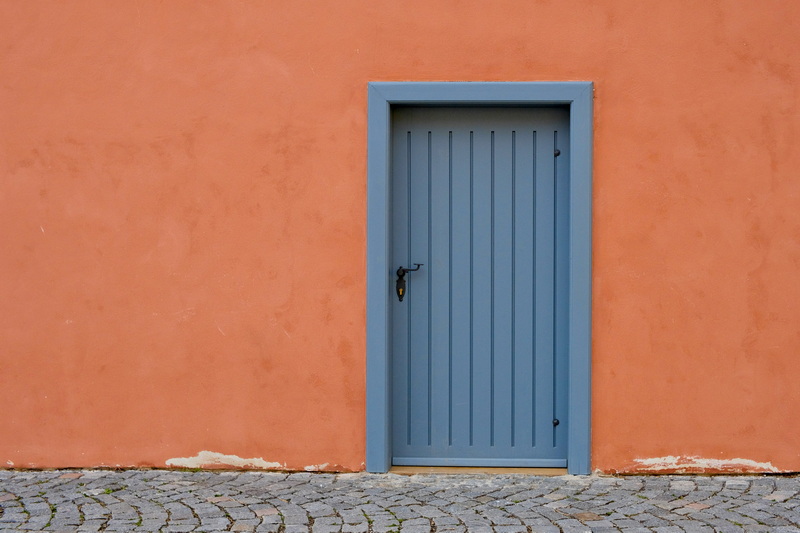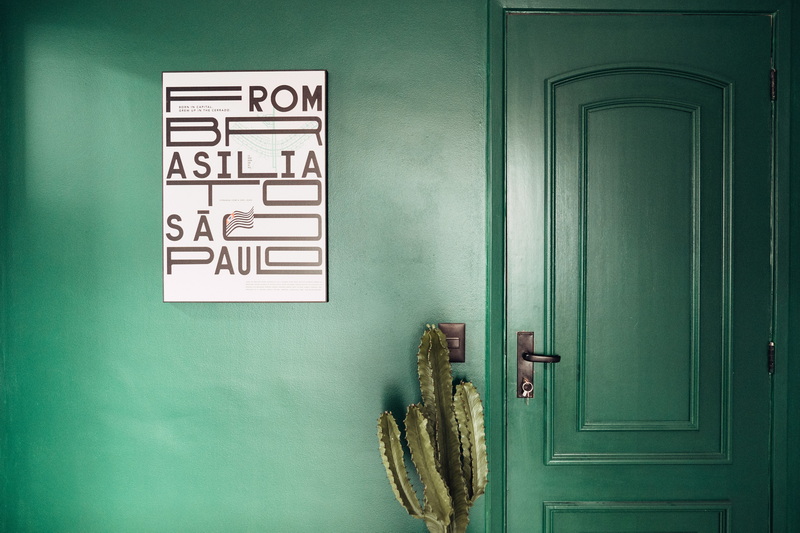English 




Views: 222 Author: Astin Publish Time: 2025-03-25 Origin: Site



Content Menu
● Introduction to Noise Reduction
● How Aluminum Door Bottom Flaps Work
● Benefits of Aluminum Door Bottom Flaps
● Installation and Types of Aluminum Door Bottom Flaps
● Comparison with Other Noise Reduction Methods
● Case Studies and Real-World Applications
● Future Developments and Innovations
>> 1. What are the primary benefits of using aluminum door bottom flaps for noise reduction?
>> 2. How do aluminum door bottom flaps compare to other soundproofing methods?
>> 3. Are aluminum door bottom flaps suitable for all types of floors?
>> 4. Can aluminum door bottom flaps be used in conjunction with other noise reduction techniques?
>> 5. How do I install an aluminum door bottom flap?
Noise reduction is a critical aspect of home comfort, especially in urban environments where external noise can be a significant disturbance. One of the often-overlooked areas in noise reduction is the bottom of exterior doors, where gaps can allow sound to enter or escape. Aluminum door bottom flaps, also known as door sweeps or automatic door bottoms, are designed to seal these gaps effectively. This article will explore how outside aluminum door bottom flaps can contribute to noise reduction and provide a comprehensive overview of their benefits and installation.

Noise pollution is linked to various health issues, including stress, sleep disturbances, and reduced productivity. In urban homes, finding effective solutions to block unwanted noise is essential for maintaining a peaceful environment. Traditional methods often focus on windows and walls, but doors, particularly their bottoms, are crucial in preventing sound leakage. Noise can travel through even the smallest gaps, making it important to address every potential entry point.
Aluminum door bottom flaps are designed to automatically drop down when a door is closed, sealing the gap between the door and the floor. This mechanism ensures that sound waves are blocked from entering or escaping through this gap. The flaps are typically made of durable materials and are integrated into the door's bottom frame, making them a seamless part of the door's functionality. Some models come with adjustable settings to accommodate different floor types and door configurations, ensuring a tight seal regardless of the environment.
1. Noise Reduction: By sealing the gap at the bottom of the door, these flaps prevent sound from entering or leaving the room. This is particularly effective in reducing external noise like traffic or neighbor sounds. In addition to noise reduction, they also help in minimizing the impact of internal noise on the outside environment, which can be beneficial in shared living spaces.
2. Energy Efficiency: Besides noise reduction, these flaps also help in maintaining indoor temperatures by preventing drafts. This can lead to lower energy bills as heating and cooling systems do not have to work as hard to maintain a consistent temperature. In colder climates, this can be especially beneficial by keeping warmth inside during winter months.
3. Durability and Maintenance: Aluminum door bottom flaps are durable and require minimal maintenance. They are resistant to wear and tear, ensuring long-lasting performance without the need for frequent replacements. This durability also means they can withstand heavy use, making them suitable for both residential and commercial settings.
4. Aesthetic Appeal: These flaps are discreet and do not detract from the door's appearance. They are designed to blend in with the door's frame, making them a practical solution without compromising aesthetics. This is important for maintaining the visual appeal of a home or office, where appearance plays a significant role.
5. Versatility: Aluminum door bottom flaps can be installed on various types of doors, including wooden, metal, and fiberglass doors. This versatility makes them a universal solution for different architectural styles and door materials.

Installing aluminum door bottom flaps is relatively straightforward. They can be mortised into the bottom of the door and adjusted to fit snugly against the floor. There are various types available, including automatic drop-down seals that spring back up when the door is opened, ensuring easy access without compromising the seal. Some models are designed with a manual adjustment feature, allowing users to customize the fit based on their specific door and floor configuration.
Other methods for soundproofing doors include using weatherstripping, acoustic caulk, and adding mass to the door itself. While these methods are effective, they may not address the specific issue of sound leakage through the bottom gap as effectively as aluminum door bottom flaps. Weatherstripping, for example, is excellent for sealing gaps around the door frame but may not provide the same level of sealing at the bottom. Acoustic caulk can fill small gaps but might not be as effective for larger openings.
In real-world scenarios, aluminum door bottom flaps have been used in both residential and commercial settings to enhance noise reduction. For instance, in busy urban areas, these flaps have been instrumental in creating quieter living spaces by blocking external noise. In offices, they help maintain a more focused work environment by reducing distractions from outside sounds.
While aluminum door bottom flaps are effective, they may not be suitable for all types of floors or door configurations. For example, they might not work well with uneven floors or doors that have a significant gap between the door and the floor. Additionally, the effectiveness of these flaps can be compromised if the door itself is not well-insulated or if there are other gaps around the door frame. Regular maintenance and inspection are necessary to ensure optimal performance.
As technology advances, there is potential for further innovations in aluminum door bottom flaps. Future developments could include smart flaps that adjust automatically based on environmental conditions or integrate with smart home systems to optimize energy efficiency and noise reduction. These advancements could further enhance the benefits of using aluminum door bottom flaps in both residential and commercial settings.
Aluminum door bottom flaps are a practical and effective solution for reducing noise by sealing the gap at the bottom of exterior doors. They offer benefits beyond noise reduction, including energy efficiency and durability. While they may have limitations, they are a valuable addition to any noise reduction strategy, especially in urban environments where external noise is a significant concern.

Aluminum door bottom flaps primarily benefit noise reduction by sealing the gap at the bottom of the door, preventing sound from entering or escaping. They also contribute to energy efficiency by blocking drafts and are durable, requiring minimal maintenance.
Aluminum door bottom flaps are specifically designed to address the gap at the bottom of doors, which other methods like weatherstripping or adding mass to the door might not cover as effectively. They provide a targeted solution for this common sound leakage point.
Aluminum door bottom flaps are generally suitable for most floors but may not perform optimally on uneven surfaces. They work best when the door and floor are aligned properly to ensure a tight seal.
Yes, aluminum door bottom flaps can be used alongside other noise reduction methods. Combining them with weatherstripping, acoustic caulk, or adding mass to the door can enhance overall soundproofing effectiveness.
Installing an aluminum door bottom flap involves mortising it into the bottom of the door and adjusting it to fit snugly against the floor. Pre-fitted screws and adjustable mechanisms make this process relatively straightforward.
[1] https://www.majesticdesigns.co.uk/news/how-can-aluminium-doors-reduce-noise-in-urban-homes/
[2] https://mssopenings.com/soundproof-benefits-of-aluminium-windows-and-doors/
[3] https://thesoundproofwindows.co.uk/noise-reduction-resources/how-to-soundproof-doors-guide/
[4] https://www.gjohns.co.uk/concealed-bottom-of-door-automatic-drop-down-weather-draught-acoustic-seal-51db-range-aluminium.html
[5] https://www.duckbrand.com/products/weatherization/door-bottoms/white-1625-in-x-36-in
[6] https://architecten.aliplast.com/en/aluminium-doors
[7] https://www.support.petsafe.net/articles/my-petsafe-extreme-weather-aluminum-pet-door-flap-is-getting-stuck-or-not-staying-closed/
[8] https://mygaragedoorguy.com/common-garage-door-seal-issues-video/
[9] https://blog.burtonacoustix.com/soundproof/soundproof-door
[10] https://grando.vn/news/anti-noise-noise-the-aluminum-door-nen3274.html
[11] https://www.eterniawindows.com/articles/how-aluminium-door-and-window-manufacturing-is-revolutionizing-noise-blocker-technology/
[12] https://www.tmsoundproofing.com/automatic-soundproof-door-bottoms/
[13] https://idighardware.com/2014/02/decoded-terminated-stops-and-door-bottom-seals-march-2014/
[14] https://www.secondskinaudio.com/soundproofing/front-door-soundproofing/
[15] https://hangzhoubiyou.en.made-in-china.com/product/kmhrqsYMnoWV/China-Acoustic-Aluminum-Door-Drop-Seal-for-Soundproof-and-Dust-Prevent-Function.html
[16] https://www.soundproofcow.com/soundproof-door-sweeps-guide/
[17] https://www.bygobo.com.au/doors/can-aluminium-doors-help-to-reduce-noise/
[18] https://theluxdoors.com/nl/outside-aluminum-door-bottom-flaps/
[19] https://door-line.com/brush-seals-vs-rubber-flaps-the-difference-in-weatherstripping/
[20] https://theluxdoors.com/es/aluminum-adjustable-door-bottom-weatherstrip/
[21] https://www.acoustiblok.co.uk/soundproofing-materials/
[22] https://nvlpubs.nist.gov/nistpubs/Legacy/hb/nbshandbook119.pdf
[23] https://www.reddit.com/r/howto/comments/113nsif/how_to_soundproof_a_door/
[24] https://www.accesshardware.com.au/door-seals
[25] https://www.marvin.com/blog/parts-of-a-door
[26] https://www.technal.com/en/tme/informations/blogs/the-sustainable-choice-exploring-the-benefits-and-advantages-of-aluminum-folding-doors/
[27] https://artisandoorworks.com/blog/garage-door-weather-stripping/
[28] https://www.youtube.com/watch?v=q6q_70hEl2g
[29] https://www.wbdg.org/FFC/DOD/UFGS/UFGS%2008%2011%2016.pdf
[30] https://www.reddit.com/r/AusRenovation/comments/17hrlw9/question_about_door_seal/
Top Aluminum Furnitures Manufacturers and Suppliers in Czech Republic
Top Aluminum Furnitures Manufacturers and Suppliers in Poland
Top Aluminum Furnitures Manufacturers and Suppliers in Belgium
Top Aluminum Furnitures Manufacturers and Suppliers in Finland
Top Aluminum Furnitures Manufacturers and Suppliers in Denmark
Top Aluminum Furnitures Manufacturers and Suppliers in Greece
Top Aluminum Furnitures Manufacturers and Suppliers in Portugal
Top Aluminum Furnitures Manufacturers and Suppliers in Austria
Top Aluminum Furnitures Manufacturers and Suppliers in Norway
Top Aluminum Furnitures Manufacturers and Suppliers in Sweden
